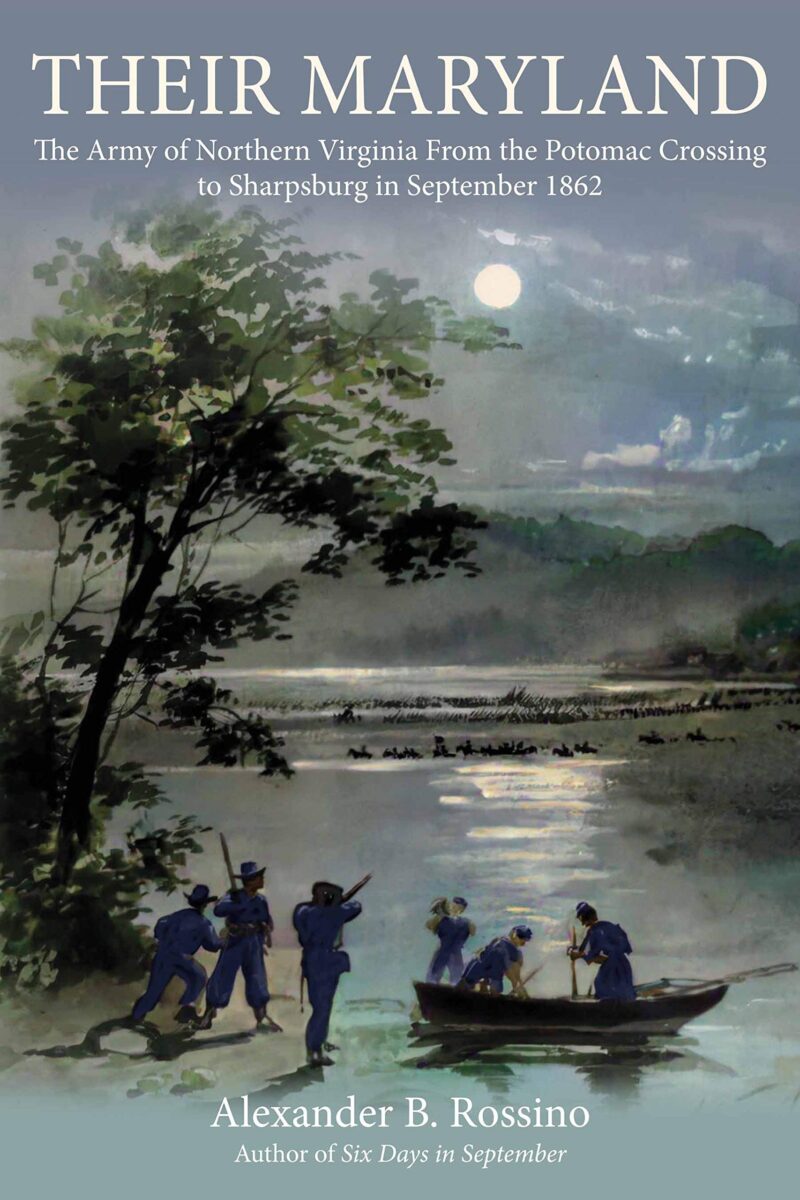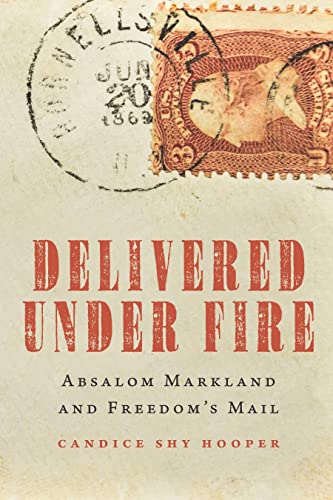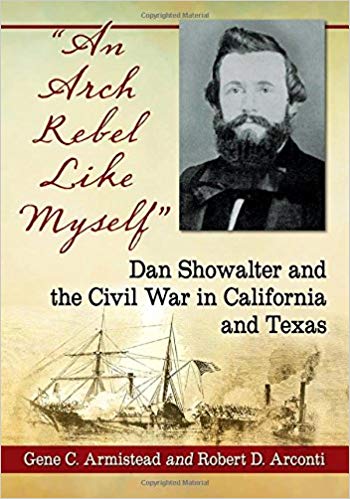By late September 1862, the soldiers in the Army of Northern Virginia were frustrated. One Virginia private cursed the “infernal” Potomac River, and a Georgia sergeant told his fiancée he never wished to “enter the Union again.” What had R. E. Lee hoped to accomplish when he crossed into Maryland earlier that month? This central question has inspired fierce debate among scholars resulting in over half a century of excellent publications on the Maryland Campaign.
With Their Maryland: The Army of Northern Virginia from the Potomac Crossing to Sharpsburg in September 1862, Dr. Alexander B. Rossino enters the discussion with a lively account that challenges prevailing orthodoxy with two guiding claims. First, Lee sought to encourage revolt among Maryland’s white population. This desire directly shaped his ideas and actions throughout the campaign. Second, “Lee decided to stand and fight very early on the morning of September 15,” which resulted in the bloody contest on the seventeenth (xiii). With this foundation, Rossino explores Lee’s political aims and military objectives, the perspectives of the Confederate rank-and-file, Special Orders No. 191, military and civilian relations in Maryland, and the fight at Antietam. Written with a revisionist flair and often engaged in lengthy historiographical debates, Rossino’s book is well suited for serious students of the Maryland Campaign already familiar with the landmark works of scholars such as Joseph L. Harsh and D. Scott Hartwig. With that said, Their Maryland offers a thought-provoking discussion of the crucial campaign and battle that will satisfy most audiences and give specialists much to consider.
Seven chapters comprise the volume, which an introduction and conclusion frame. Six appendices further explore subject matter mentioned in the main text. The book maintains a good pace, includes a thorough sampling of source materials, and is nicely illustrated with images and maps. Although a central thesis guides the study, the material can be at-times disparate. Chapter Five’s deep dive into the Confederates photographed at Frederick, Maryland, for example, feels more like an independent essay than integrated book chapter. Rossino nonetheless successfully builds a fascinating case for his key charges through thoughtful analysis of wartime and postwar writings. By so doing, he seeks to overturn the oft-stated charge that “Lee’s decision to fight at Sharpsburg” was “an act of bravado, or defiance, or desperation, or a manifestation of spite for Gen. McClellan” (257). Instead, Rossino meticulously documents how the Maryland Campaign’s failure ultimately led to revisionist narratives that maintained Confederates never expected Marylanders to rally to their cause. The reconstruction of Lee’s shifting thinking, careful interrogation of sources, and the scrutiny of post-campaign writings underpin Rossino’s account.
Their Maryland rests on a variety of source materials, including the Official Records, the Southern Historical Society Papers, Battles and Leaders, newspaper accounts, diaries, letters, memoirs, and reminiscences. Rossino is particularly good at capturing the perspectives of the Confederate rank-and-file and piecing together how the campaign unfolded on the ground. He is less successful in consistently scrutinizing potentially problematic sources such as newspapers, which were notoriously politicized. Given the work’s extended engagement with existing scholarship, readers would do well to familiarize themselves with the cited titles to formulate their own conclusions and contextualize the book more fully.
Rossino’s questioning of timeworn claims puts old sources in a new light and provocatively advances the book while engaging the reader. The interpretation is nonetheless often heavy-handed. Causal reductionism sometimes obscures the complex events and decisions leading up to the battle of Antietam. This, in turn, is rooted in a polemical writing style that often breaks down rather than builds upon the robust body of scholarship on the Maryland Campaign. Still, though, Rossino posits the convincing conclusionthat “once Lee made a decision to fight on September 15, he never modified, second-guessed, or otherwise strayed from it” (180). Thus, with strong resolve the Confederate general prepared a solid defensive front and gave battle on the seventeenth resulting in the bloodiest day in American history. Lee, Rossino concludes, “rolled the dice at Sharpsburg and lost” (257). Confederate soldiers’ later frustrations with Maryland and its people demonstrated how their high hopes had become dashed with defeat.
Rossino’s challenging work offers new insights into the Maryland Campaign, persuasively isolates Lee’s motives, and carefully reconstructs the movements of the Army of Northern Virginia. Although readers may not always agree with the author’s claims, they will enjoy the spirited debate inspired by the book.
James J. Broomall is the Director of the George Tyler Moore Center for the Study of the Civil War at Shepherd University.




